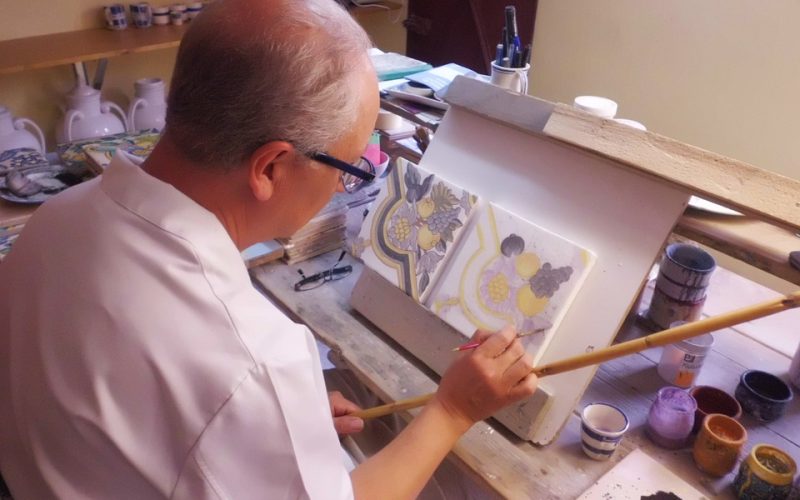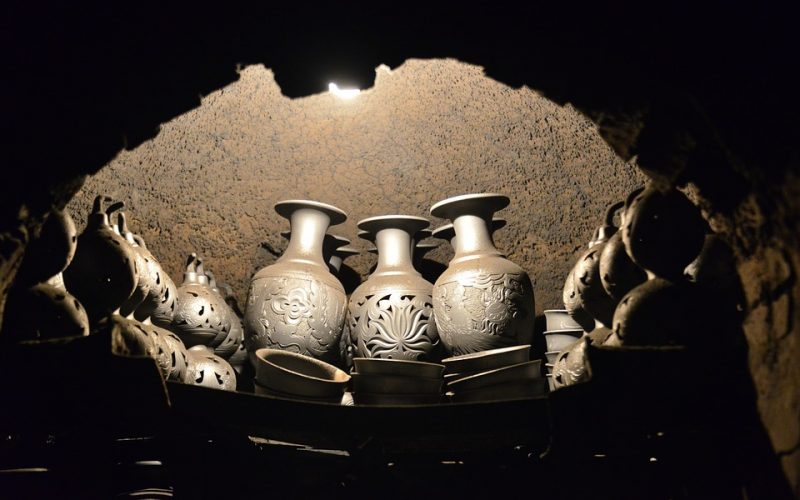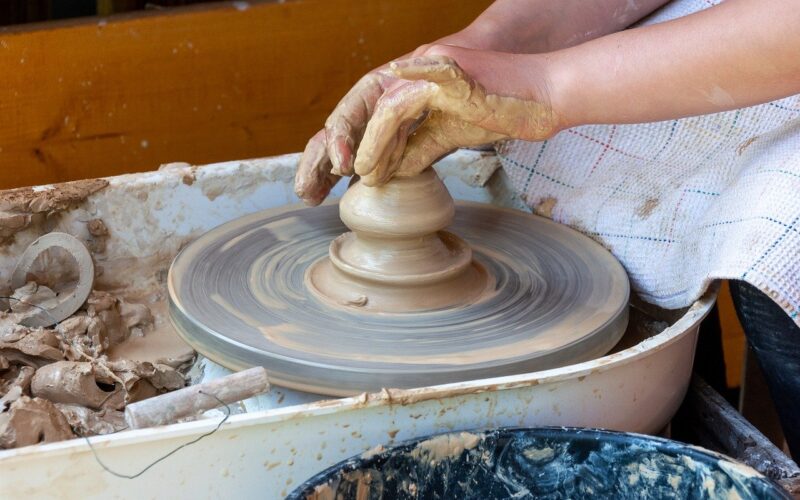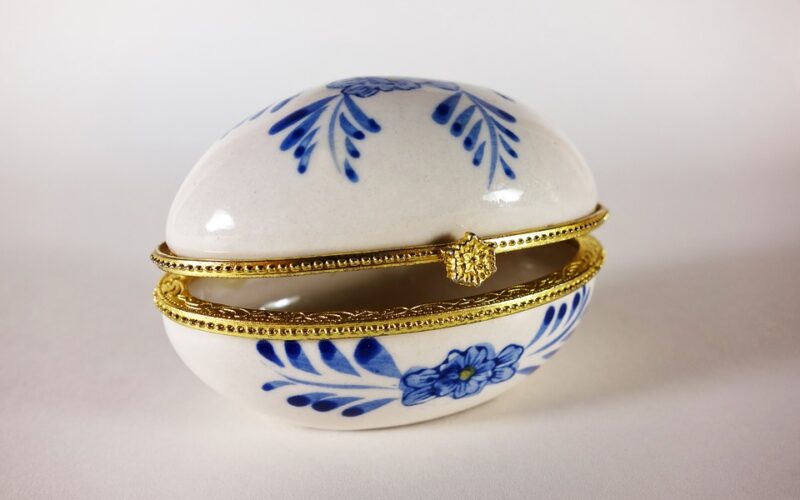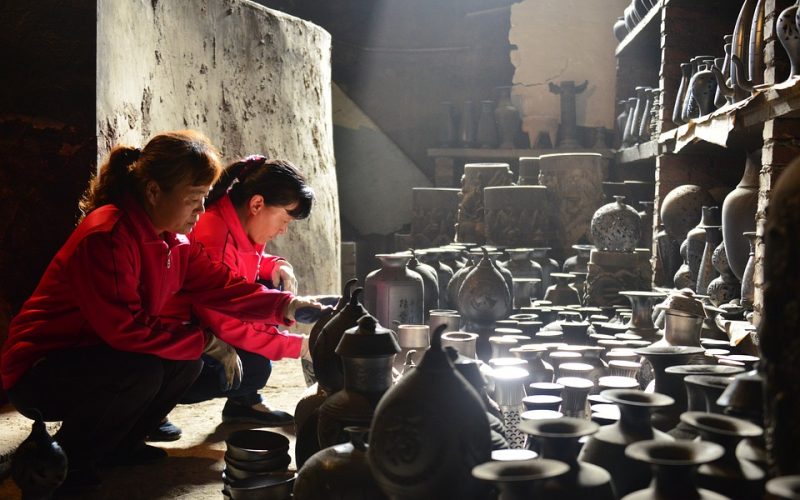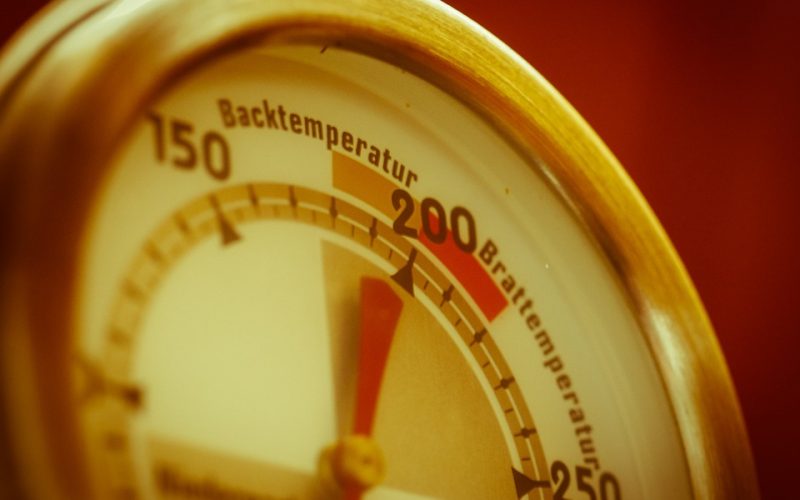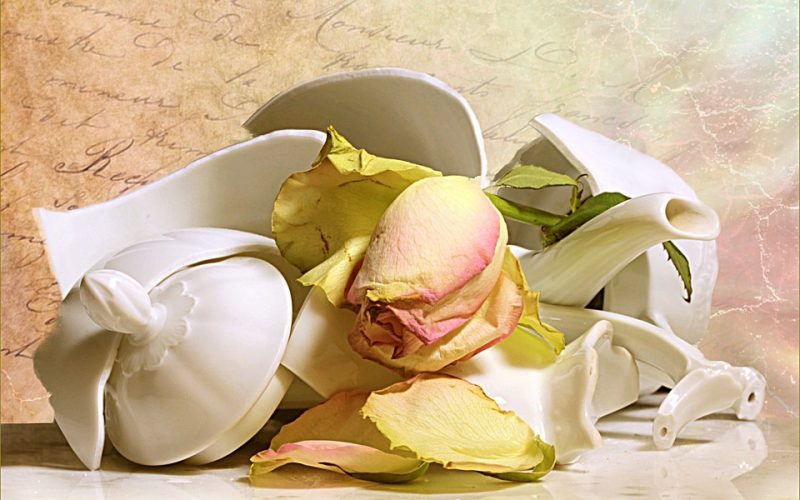The Ceramic Manufacturing and Decorating Process
In most processes, such as plastics manufacturing, material is produced and then formed into the final product. Making ceramics is a process wherein the form takes place before the final material has been created. A potter takes the clay, molds it into the desired shape and dries it. Once dried, the clay piece is then fired in a kiln to turn the clay into bisque. Bisque is the undecorated form of ceramic material.
Once the ceramic material has been created, the manufacturing process is complete. Any additional steps required are for decorative purposes. In the case of pots, there are many ceramic pots that use colored clay and need no further decorating. These are generally used for outside items such as planters. A final glaze is not necessary for decoration or sealing and the material will withstand weathering for years.
For ceramic items to be used inside the home, a decorative layer and final glaze are added to the pot. The decorative process of ceramics is artistic in nature. It adds a layer of design or color to the pot. If a textured look is wanted without a textured feel, glass decals and glass transfers can be used in this step. They give the appearance of texture while keeping the feel of the piece smooth. They take less time than hand painting and offer the potter a chance to decorate quickly and accurately.
A glaze is generally the last step in decorating a ceramic pot. This step allows a final seal to be placed on the ceramic piece. It adds a layer of depth and a shiny finish. It also seals the decorative layer onto the pot. Once the glaze is added over the decorative layer, the pot is again fired in a kiln. This seals the glaze to the pot and the process is complete.
